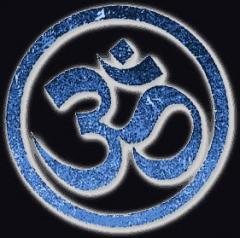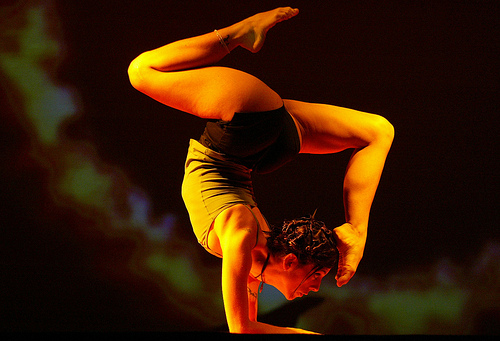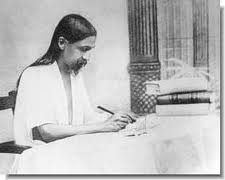Integral Health
The metaphysical basis for Integral Health — the fourfold nature of the Self
It is interesting that Reality or Brahman can be perceived in many ways. When it is experientially perceived in an existential mode, it is known as the Self.
The Mandukya Upaniṣad (1) describes the fourfold nature of the Self:
1. The first poise of the Self is that “whose place is the wakefulness, who is wise of the outward, ... who feels and enjoys gross objects”(p. 289). This is the poise that represents the sense-bound and ego-centred personality in contemporary psychology, external self in conventional yogic terminology and ‘outer being’ in Aurobindonian parlance. This is the field of being where illness usually manifests due to discordance among its several planes of consciousness. This is where accidents and injuries, self-inflicted or otherwise, disrupt the bodily functioning. Therapeutic intervention has also to be effective at this poise though different therapies are designed for application at different planes of consciousness (e.g. mental, vital, physical) within this poise.
2. The second poise of the Self is that “whose place is the dream, who is wise of the inward ... who feels and enjoys subtle objects”(2)... This is what Sri Aurobindo names the ‘inner‘ or ‘subliminal being’. On one hand, the inner being is connected with the cosmic consciousness. On the other hand, it is also connected with the outer being through channels of communication known as cakras, which are usually partly functioning or non-functioning in ordinary life. The inner being holds the ‘subtle senses’ and is capable of acquiring supra-rational knowledge. As the inner being is connected both with the cosmic consciousness and the outer being, it can serve as a conduit for giant disruptive forces in the cosmic consciousness that can cause illness in the outer being. Likewise, it can act as a conduit for universal healing vibrations that can be effectual at the level of the outer being. In advanced yogis, the inner being often progresses very fast while the outer being lags behind. The resultant mismatch can result in serious illnesses. The inner being also progresses towards the superconscious at one end and through the subconscious to the inconscience at the other end. Naturally, if it is open to the Divine Grace at one end, at the other end it serves as a medium through which collective suggestions in the universal unconscious and repressed conflicts in the subconscious can surge up to cause illnesses as well as recurrences of chronic illnesses.
3. The third poise of the Self has been described mystically, “When one sleeps and yearns not with any desire, nor sees any dream, that is the perfect slumber. He whose place is the perfect slumber, who is become Oneness, who is wisdom gathered into itself, who is made of mere delight, who enjoys delight unrelated, to whom conscious mind is the door, Prajna, the Lord of Wisdom, He is the third”(3). This is the ‘inmost being’ in Aurobindonian parlance. It is the being of desire-less delight, it is the being who from behind projects the frontal personality. It carries the essence of oneness while at the same time supports our divided being. This poise is unaffected by disease and disharmony, immune from attacks by disruptive forces in the subconscious and the collective unconscious and is actually the poise of perfect health. In fact, the quintessence of Integral Health is to shift the lever of consciousness from the outer ranges of the being to this inmost essence. It is significant that the term Swasthya used in Sanskrit for health denotes to be poised or rooted in one’s inmost essence or Self.
4. The fourth poise has been described in experiential terms, “He who is neither inward-wise, nor outward-wise, nor both inward and outward-wise, nor wisdom self-gathered, nor possessed of wisdom, nor unpossessed of wisdom, He Who is unseen and incommunicable, unseizable, featureless, unthinkable, and unnameable, Whose essentiality is awareness of the Self in its single existence, in whom all phenomena dissolve, Who is calm, Who is Good, Who is the One than Whom there is no other, Him they deem the fourth: He is the Self, He is the object of knowledge”(4). This is the Self poised above the manifestation. It supports the manifestation while remaining detached. In Aurobindonian terms, it is experientially perceived through the Central Being that projects the impersonality dimension which in turn upholds the personality. While Western psychology studies the being in terms of ‘personality’, yoga psychology studies the being both in terms of ‘personality’ and ‘impersonality’. When the central will at this poise of the Self abdicates its responsibility and no longer supports the manifestation, the form begins to dissipate and death of the outer being becomes inevitable and spontaneous despite all therapeutic intervention. As long as the Central Being does not abdicate its responsibility to support the manifestation, one can still recover and recuperate from any serious illness with adequate therapeutic intervention. If however there is a sudden unexpected accident or injury afflicted by others or by oneself to the outer being without optimal time for corrective measures at a time when the Central Being is not yet ready to withdraw its spontaneous support to the manifested being, the ensuing violent death can cause a chaos and upheaval in the realms of the subject’s consciousness with reverberating effects on immediate surroundings. Thus, if through a process of progressive self-development through consciousness, one can align the ‘individual will’ in consonance with the ‘divine will’, a graceful death or even a death by willing (Icchamṛtyu) can become a reality.
Illness and death spares none regardless of whether one is a mystic or commoner. A journey through the realms of integral health is a voyage of self-discovery that makes life and even death meaningful.
The fourfold nature of the Self and the three poises of Reality
Sri Aurobindo has quoted verses from the Mandukya Upaniṣad at the beginning of the third chapter of The Life Divine which refer to the fourfold nature of the Self but within the chapter itself he elaborates how Reality is simultaneously manifested in the three poises of the Individual, the Universal and the Transcendent. These two ways of perceiving the same Reality seem to represent two distinctive paradigms of consciousness and it would perhaps be an oversimplification to interchange one for the other. Yet the mantle falls on the reader of The Life Divine to relate the two paradigms to one another.
It needs to be understood that the Transcendent, the Universal and the Individual are three poises of Reality that co-exist at the same time. Likewise, the fourfold nature of the Self is not successively but simultaneously present. Actually, the fourfold nature of the Self has to be studied against the background of the three poises of the Reality. At each poise of Reality, the Self has stress on one or other aspect of its fourfold nature and this stress has ramifications in the fields of yoga psychology, Integral Health and personal growth:
1. At the individual poise, there is more stress both on the outer being and the inmost being. The discordances between the different planes of consciousness represented in the outer being are responsible for many of our illnesses and these have to be analysed, interpreted and harmonised for healthy living. The quintessence of an integral approach to health lies in shifting the focus from the outer being to the inmost being. The inmost being is the true individual and is unaffected by disease and disharmony. It is the fulcrum of the manifested being. An integral programme of personal growth needs a harmonisation of the different planes of consciousness around the inmost being.
2. At the universal poise, the Self has more stress on the inner being. The inner being can connect with the ‘collective unconscious’ of Jungian psychology as well as the cosmic consciousness of the mystics. There are giant disruptive forces in the universe that can enter through the inner being to cause disequilibrium and illness. There are also healing vibrations in the cosmos which can also enter through the inner being to exert beneficial effects. It is because of this communication of the inner being with the universe that prayers and distant healing can also be effective at the level of the outer being.
3. At the transcendental poise, the Self lays more stress on the dimension of impersonality experienced through the central being whose metaphysical dynamics hold the seed-ideas of health, well-being and psychology. The central will at this level sanctions support to the manifestation and is thus the secret raison-d’être of health, well-being and personality. The central will can withdraw support to the manifestation, triggering off the sequences that lead to dissipation of forms, precipitating death. If the individual will can simultaneously align with the universal will and the transcendental will, one can experience the consciousness of eternity as well as strive for the choice of a ‘willed’ death. In fact, the ability to ‘will’ death can be developed as a personality attribute in yoga psychology and can replace the dilemma surrounding the choice of voluntary death in active euthanasia.
Sri Aurobindo’s Integralism is a dynamic and manifold movement. The fourfold nature of the Self has to undergo integration and this integrated Self has to be studied in the context of different poises of Reality. The three poises of Reality have to be themselves integrated. This multiple movement leads to an integration of metaphysical and mystical traditions with health, well-being and psychological sciences. Such a complex mosaic of integralism provides the matrix to support the emergence of higher, progressively integrated evolutionary models of the human being.
References
1. Sri Aurobindo. Sri Aurobindo Birth Centenary Library, Volume 12. Pondicherry: Sri Aurobindo Ashram Trust; 1971.
2. Ibid.
3. Ibid. p. 290.
4. Ibid.
Share with us (Comments, contributions, opinions)
When reproducing this feature, please credit NAMAH, and give the byline. Please send us cuttings.




